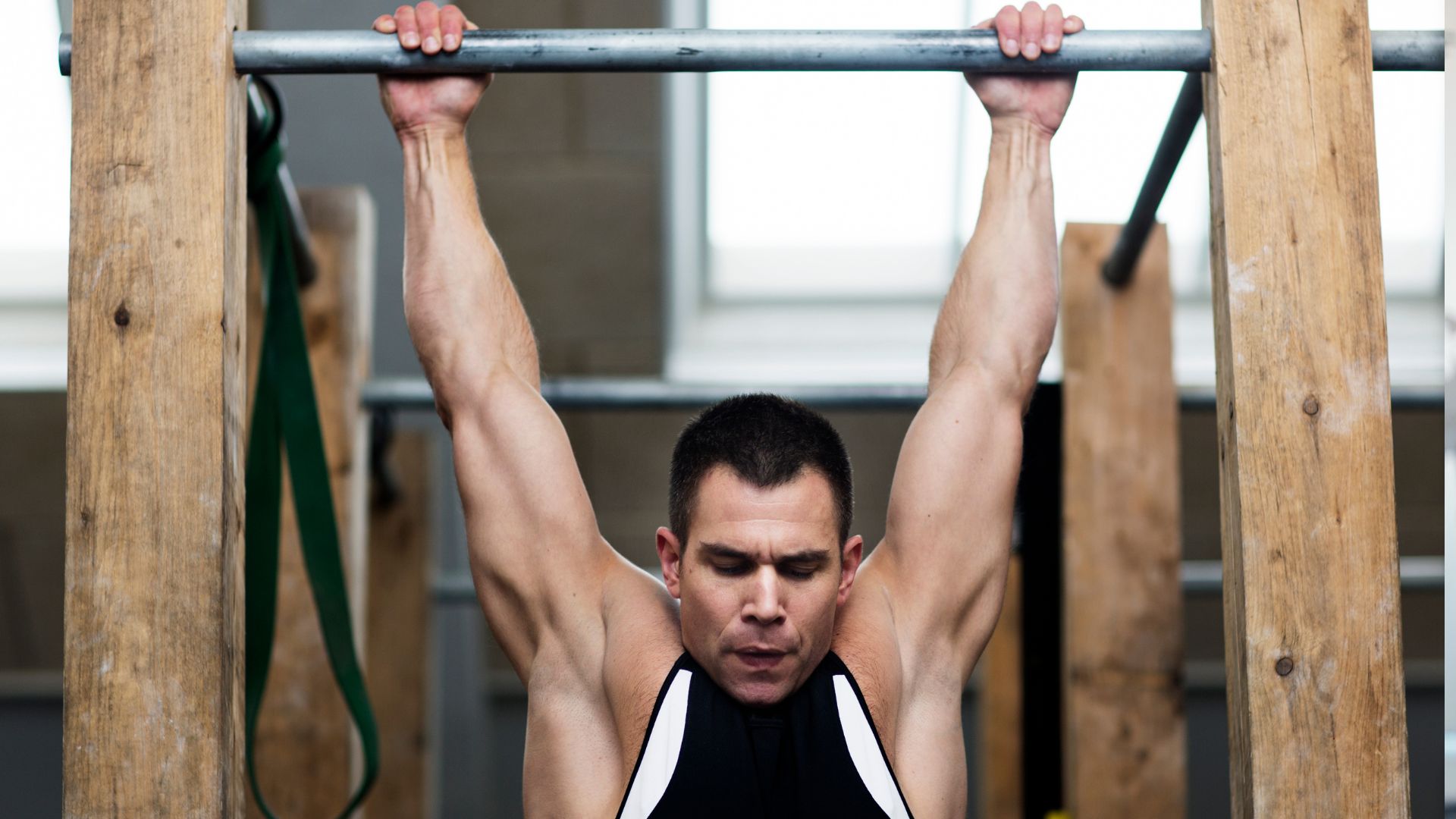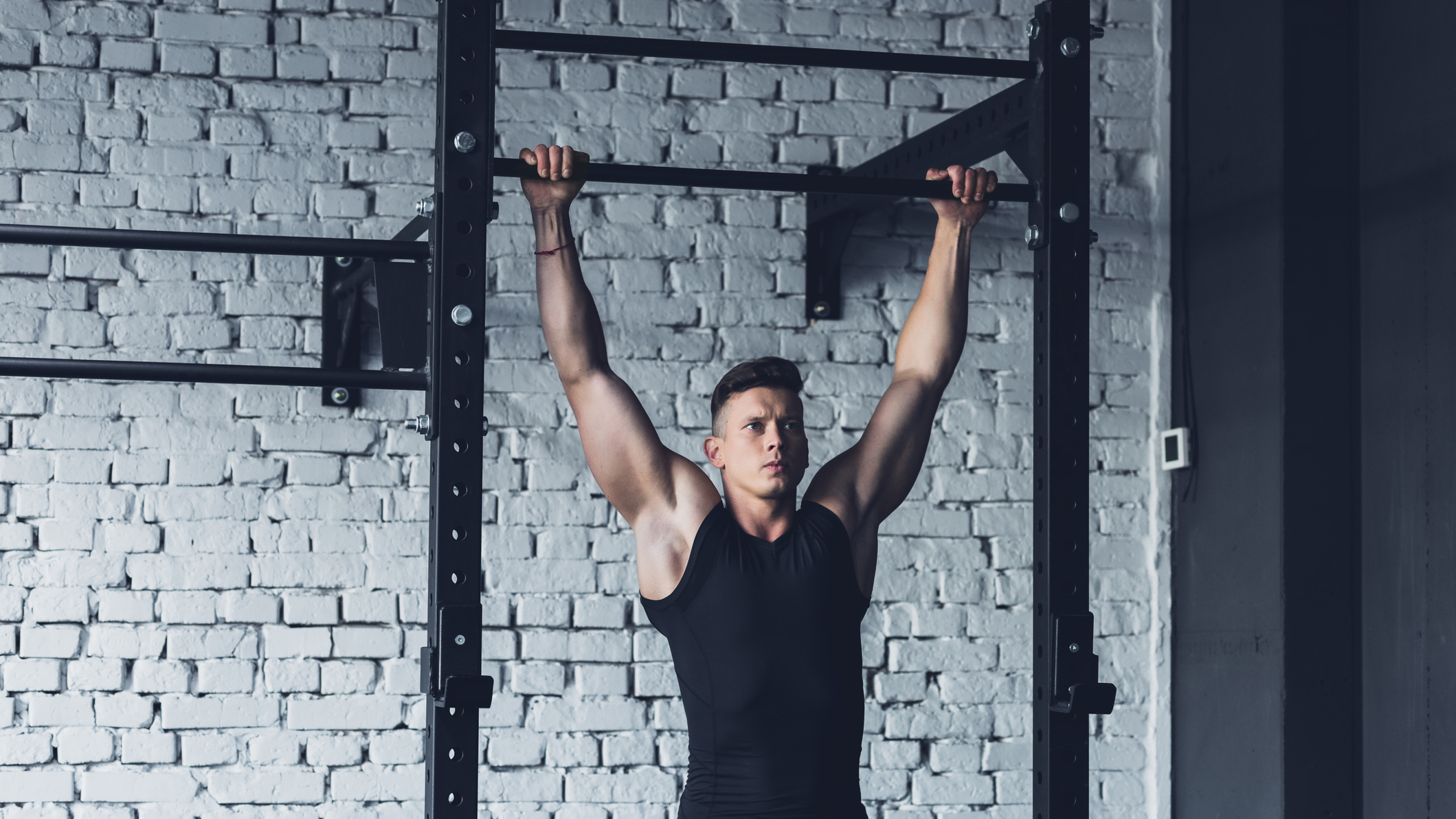
Remember the thrill of conquering the monkey bars as a kid? That feeling of hanging in the air, defying gravity, and channeling your inner gladiator? It turns out, there’s more to those playful moments than nostalgia – hanging, specifically the dead hang, is an underrated powerhouse of an bodyweight exercise.
Not only does it strengthen your upper body and improve your grip, but it also decompresses your spine, stretches tight muscles, and might even improve your posture. Intrigued? So was I. When I stumbled across a ‘Hang for a Minute’ challenge, I thought, “How hard can it be?” Spoiler: It’s harder than it looks – but the rewards? Worth every second.
What muscles do Dead Hangs use?
Dead hanging is great for grip strength as well as other benefits, including shoulder health, scapular mobility, efficient pulling mechanics and spinal decompression️. The spinal decompression benefit for me was massive.
Imagine hanging from a bar and feeling everything from your shoulder joints to your neck to your spine lengthen. This is exactly how I felt when hanging - like I was being stretched, creating space between each vertebrate while stretching out my pecs, lats, and shoulders.
My core was also activated as I recruited my six-pack muscles to stabilise myself. They also felt stretched out and lengthened. It's a great way to polish off an abs session.
How to do Dead Hangs
The dead hang is exactly what the name suggests. It’s a compound exercise where you hang from an overhead bar as if you’re about to do a pull-up.
Simply find or set up a pull-up bar and hold on tight using an overhand grip (palms facing away from you). Your arms should be shoulder-width apart - or slightly wider if that feels more comfortable and elbows straight.
Hang from the bar and tense your core and glutes for stability and additional strength work.
The aim is to relax into your shoulders and keep your ribcage down and tailbone tucked slightly under to prevent your spine from hyperextending.
Hang for as long as you can and until you feel your shoulders and neck are overly tensing to sustain the position or your forearms give way.
There’s not much that can go wrong with the dead hang - but some common mistakes include:
- Swinging: The aim of the game is to hang dead still. There should be absolutely zero motion.
- Shrugging your shoulders: Your shoulders should be fully extended in order to maximise the engagement and stretch in your lats. Externally rotating your shoulders and pulling your shoulders up towards your ears might give your forearms some temporary relief but can equally strain the neck and upper back.
- Holding your breath: Don’t do it! Dead hangs pose a great opportunity to focus on your breathing. Get it right and you will keep your body calm, and probably hang for longer.
What happened when I incorporated Dead Hangs into my training

Let’s start with the shoulders – dead hangs gave me a stretch unlike anything else I’ve tried. I’m the person who awkwardly stretches in supermarket queues, desperately interlacing my fingers behind me after hours hunched over my laptop. But nothing compares to the release from a dead hang. The weight of my body amplifies the stretch, melting away tension and unknotting stubborn muscles in a way that feels both restorative and energising.
Then there’s my spine. Within seconds of hanging, gravity worked its magic, gently elongating my back and providing instant relief. It felt like my entire spine was being “ironed out,” a sensation of decompression that’s backed by studies showing dead hangs can improve flexibility, especially for those with spinal curvature. After heavy deadlifts and squats at the gym, dead hangs became my secret weapon, easing lower back stress and transforming my posture. Standing taller isn’t just about aesthetics – it’s about carrying yourself with newfound confidence.
But the most satisfying win? Breaking my pull-up drought. After just a few weeks of hanging daily, I went from zero pull-ups to my first-ever unassisted rep. Dead hangs strengthened my grip and engaged my scapular muscles – the unsung heroes of pulling power – proving that even your weakest links can grow stronger with the right approach.
By week two, I managed to hold a dead hang for 1 minute and 10 seconds, surpassing the 60-second challenge that started this journey. My next goal? Two minutes – a benchmark linked to longevity benefits, according to researchers. And after that? Perhaps a shot at the world record of 1 minute 56 seconds with just two fingers, set by climber Pete Whittaker. Watch out, Pete – I’m hanging in there, and it feels incredible!







